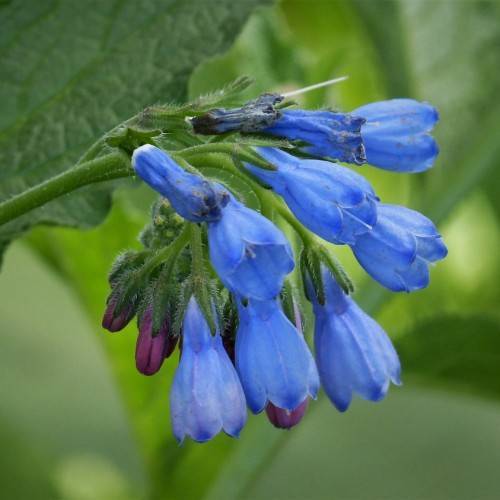
prickly comfrey
Symphytum asperum
Cycle:
Herbaceous Perennial
Watering:
Average
Hardiness Zone:
4 - 8
Flowers:
Flowers
Sun:
Full sun,part shade
Leaf:
Yes
Growth Rate:
Low
Maintenance:
Moderate
Poisonous To Pets:
Yes
Drought Tolerant:
Yes
Thorny:
Yes
Invasive:
Yes
Care Level:
Medium
watering
Prickly comfrey (Symphytum asperum) requires regular watering during its growing season, spring to early summer. During that time, water the soil around the plant thoroughly about once a week, ensuring the soil is evenly moist. During hot, dry weather, water the plant every 3-4 days so the roots remain hydrated. It can also be helpful to mulch around the plant to help retain moisture in the soil. Reduce the amount of water given during late summer and fall, as this is the dormant period and the plant does not require as much water.
sunlight
Prickly comfrey (Symphytum asperum) grows best in full sunlight, as it needs a minimum of 6 hours of bright sunlight for optimum growth. This plant thrives during the long days of summer, when sunlight is both abundant and intense. However, during the shorter days of winter, prickly comfrey will require supplemental light in order to thrive. A combination of full sunlight and artificial light can help to ensure the plant grows well year-round.
pruning
Pruning of prickly comfrey (Symphytum asperum) should begin after the plant has finished blooming, usually during late summer. Pruning should focus primarily on removing any dead, diseased, or damaged growth, as well as removing any spent blooms. When trimming, be sure to prune back to just above a bud to encourage new growth. This should be followed by a light shaping of the plant to maintain its desired shape. Prune sparingly, as prickly comfrey responds well to minimal trimming.
